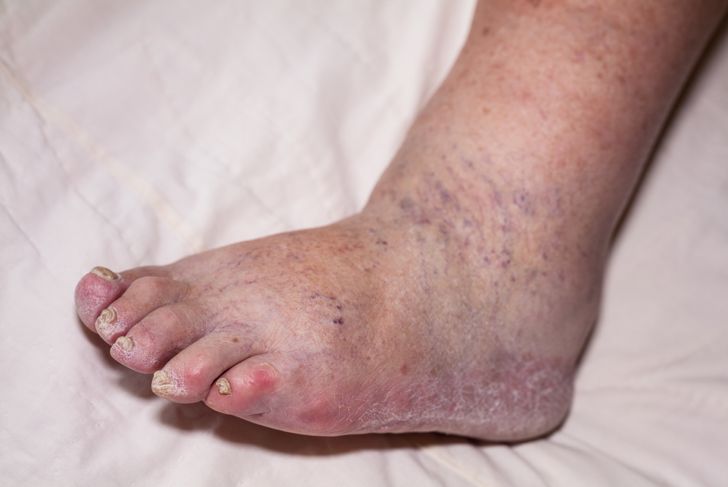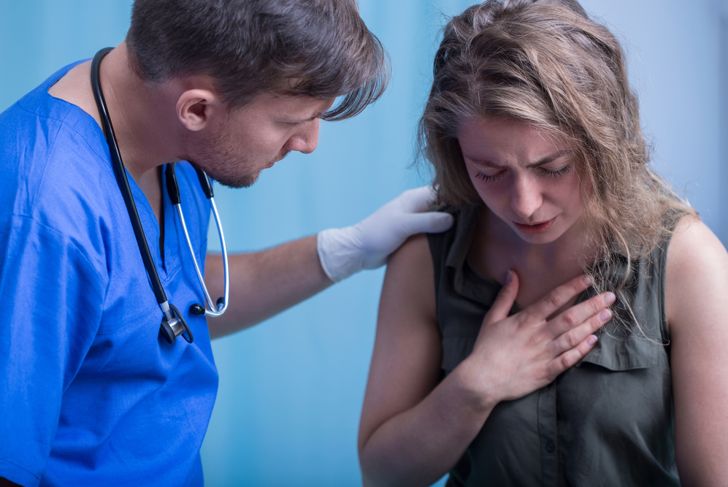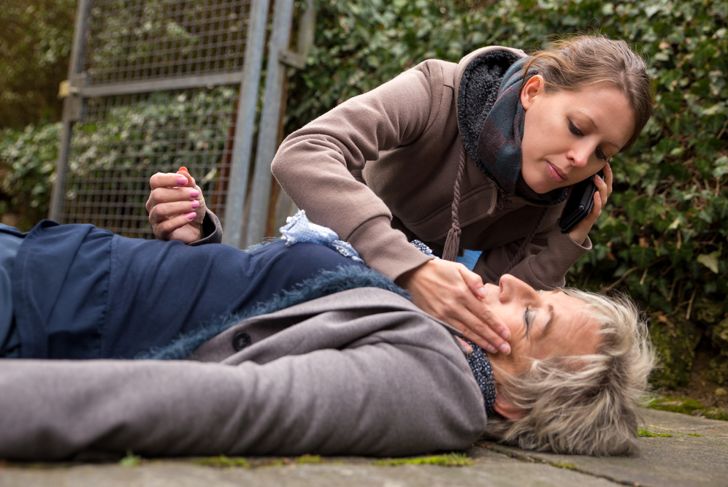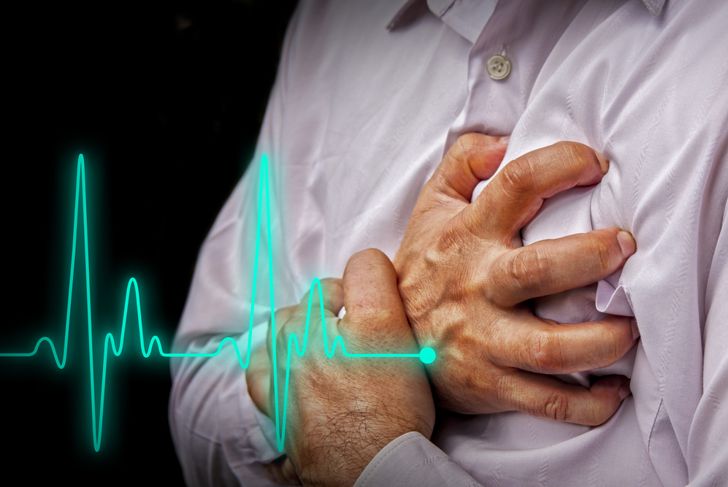For many people, blood clots often form in the legs during periods of inactivity. Sometimes, these clots can dissolve naturally, especially if they form after an injury that is healing. However, the kind of blood clots that can form after events like surgery are much more serious. Those that form in the deep veins of your body are called deep vein thrombosis, or DVT. If these clots break off and travel through your veins, they can lodge in the lungs and create a pulmonary embolism. As a result, they can wreak havoc on your system. This unfortunate string of activities leads to heart attacks or stroke. The scariest thing about blood clots is that they often happen with no notice. They stop blood from leaving your organs and traveling back to your heart. This creates a serious health crisis. Here are ten things you should watch for in your health to determine whether you might have a blood clot.
Lethargy or Fatigue
Sometimes, fatigue can be a symptom of simply not getting enough sleep. However, there are many other causes of fatigue that can be life-threatening. These causes include medication side effects, cancer, heart trouble or blood clot. Unless you consult your doctor and take diagnostic tests, you may not know the exact cause of your fatigue. Moreover, you may not know that it is creating a risk to your well-being. If the cause is a blood clot, you are likely not getting enough oxygen in your muscles and brain. When a blood clot stops the flow of blood back to your heart, it is robbing you of vital oxygen and energy. Your tiredness could be the earliest warning sign of a blood clot that you get. In any case, abnormal fatigue merits a visit to your doctor.
Varicose Veins, Redness, and Swelling in the Legs
Varicose veins, which happen most often in the legs, have a bluish-purple or red color. Many people also call them “spider veins,” and they appear when you veins enlarge, dilate and overfill with blood. This overfilling weakens them, making them appear twisted just beneath the surface of your skin. The danger in having varicose veins is that the blood that flows through them moves slow. As a result, blood clots form. Fortunately, the blood clots that form from varicose veins do not travel to the lungs and cause a pulmonary embolism. However, it is something you and your doctor should watch closely. Although it is not common, an embolism is possible.
Shortness of Breath
People experience shortness of breath for a range of reasons. Some of these include asthma, pneumonia, anemia, anxiety, an allergic reaction, or obesity. However, shortness of breath can also signal that you have a blood clot. When a blood clot forms in your veins, it can break away from the site where it lodges and moves through your heart. Then, it moves to your lungs and cuts off the oxygen supply in your blood. This is a potentially deadly situation. Therefore, you should get immediate medical attention. Heart or lung problems often cause shortness of breath and limits your ability to function normally.
Pain with Breathing or Other Chest Pains
Most people immediately consider that they may be having a heart attack when chest pain strikes. However, they do not know that a blood clot might have caused the heart trouble. For that reason, any chest pains you may experience could indicate that you have a blood clot. If you are sweating, and it is painful to breathe deeply, these are additional warning signs. Experts say that a blood clot that causes a pulmonary embolism feels like sharp pains in your chest. However, if your chest feels like it is holding a heavy weight, that is likely a heart problem. You should remember that both of these feelings can be a threat to your life.
Sweats and Fever
About 14 percent of the people who experience a pulmonary embolism contract a fever. One explanation connects the presence of a blood clot to inflammation. When the tissues affected by a blood clot become inflamed, they feel warm to the touch. Moreover, advanced blood clots that move inside of your veins may cause a fever. Eventually, the fever may cause you to sweat. If the blood clot creates cardiac arrest, you also may experience sweating as a symptom.
Fainting and Dizziness
Doctors restrict patients diagnosed with blood clots from flying. If the clot forms in your legs, the required sitting time on an airline flight will aggravate it. In fact, it may trigger it to move to other areas of your body. Additionally, the change in air pressure during flying may force blood clots to develop a blockage in your heart or lungs. This could cause fainting or chronic dizziness. The occurrence of a blood clot disrupts the flow of oxygen to your heart, lungs, brain, and organs. When anything cuts off your oxygen flow, you should always stay mindful of possible causes. If you are flying on a plane, try to move your legs at intervals to promote proper circulation. If you are on the ground, you should seem immediate medical attention for any dizziness or fainting spells.
Fast Heart Beat
If you are an adult, your normal heart rate should range between 60 and 100 beats per minute. However, other factors also influence what you may consider a normal heart rate. First, the idea of normal depends on your age, body size, and age. It also depends on what you are doing at the time you measure your pulse. Other factors include medications, air temperature, emotional state, and heredity. Because the range of heart rate factors is so varied, you always should be aware of how your own normal should appear. When a blood clot occurs, you certainly could experience an increased heart rate. The clot and poor oxygenation force your heart to work harder in order to keep your body performing properly. Do not assume that a sped up heart rate is normal.
Persistent Unexplained Cough
If you are coughing up blood, you could be experiencing a pulmonary embolism. Therefore, you should not hesitate in getting to a medical facility for assistance. As mentioned already, your lungs are the most likely place for a loose blood clot to lodge, and this endangers your life. Moreover, the body’s natural response to anything caught in the lungs is a cough. If a cold or allergies is not causing your cough, it may persist. Additionally, it also takes some time for professionals examining you to determine that it is a clot. If you delay in getting to them, you are losing precious time.
Blood In Your Expectorant
You should be concerned about any blood in your body fluids. It is a sign of something more serious that you may not already detect. Furthermore, it is an issue for someone with far more medical training and experience. The color of your phlegm, which comes out of you whenever you cough, should never be bloody. Phlegm indicates the health of your respiratory membrane and passages. Moreover, bloody phlegm indicates that you are in trouble. You should get a doctor to examine you right away to determine whether you have a blood clot or some other serious condition.
No Signs At All
You may not notice or experience any sign that there is something wrong until the clot lodges. This is dangerous and causes massive complications, which often include death. Therefore, if you are at an increased risk for clots, make sure you keep a close eye on your progress. Consult your doctor to do regular exams so that you know when something is wrong.

 Home
Home Health
Health Diet & Nutrition
Diet & Nutrition Living Well
Living Well More
More




















